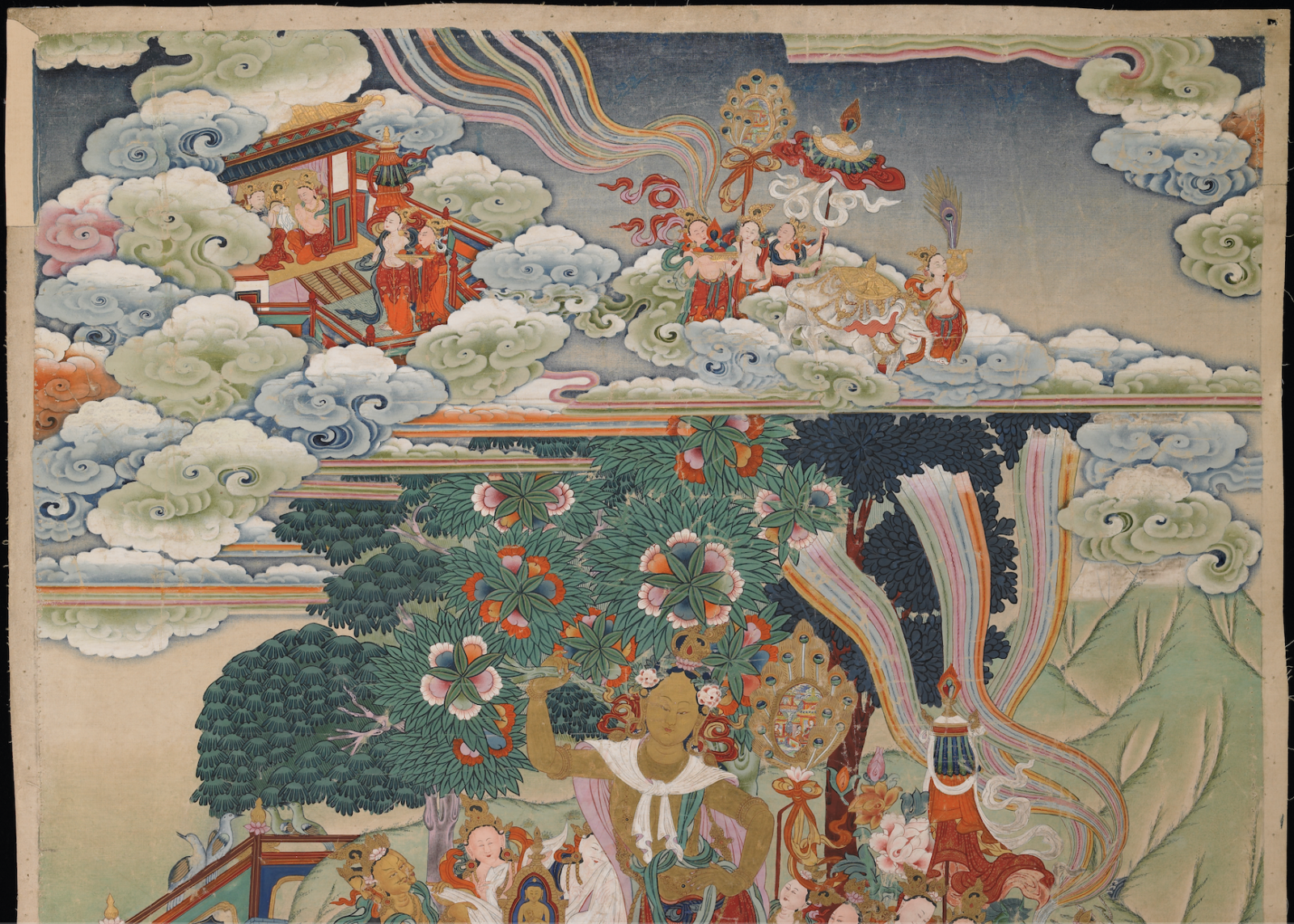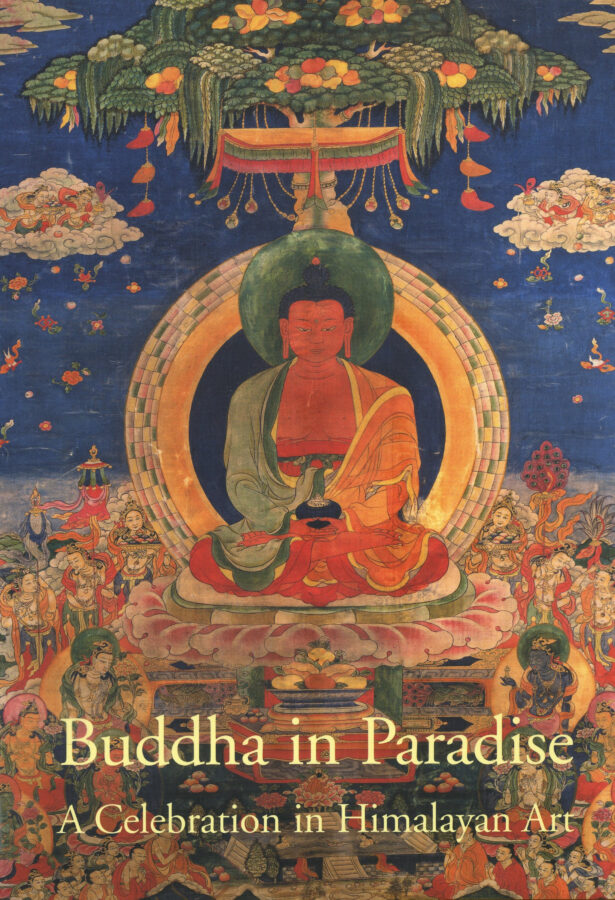Buddhists believe that ordinary beings may be born within one of the six realms of existence, which are bound within the endless cycle of birth, death, and rebirth (samsara). As illustrated in the Wheel of Becoming, the possibilities for rebirth range from demons in the deepest hells to gods in the highest worldly paradises; all worldly realms, however, are marked by impermanence and suffering.
Pure Lands, on the other hand, are free from the delusion and suffering that characterize these ordinary realms of existence and are also understood to be different from the paradises of the worldly gods, which are themselves bound within samsara. Yet even Pure Lands are neither final destinations nor the equivalents of “enlightenment.” Rather, they are understood as blissful, user-friendly way-stations between worldly existence and liberation, such that beings reborn in them have the possibility of quickly reaching enlightenment. Buddhists often pray for rebirth into a Pure Land, but to those who are prepared to make use of such knowledge, the Buddha also preached that Pure Land paradises are in fact all around us.

